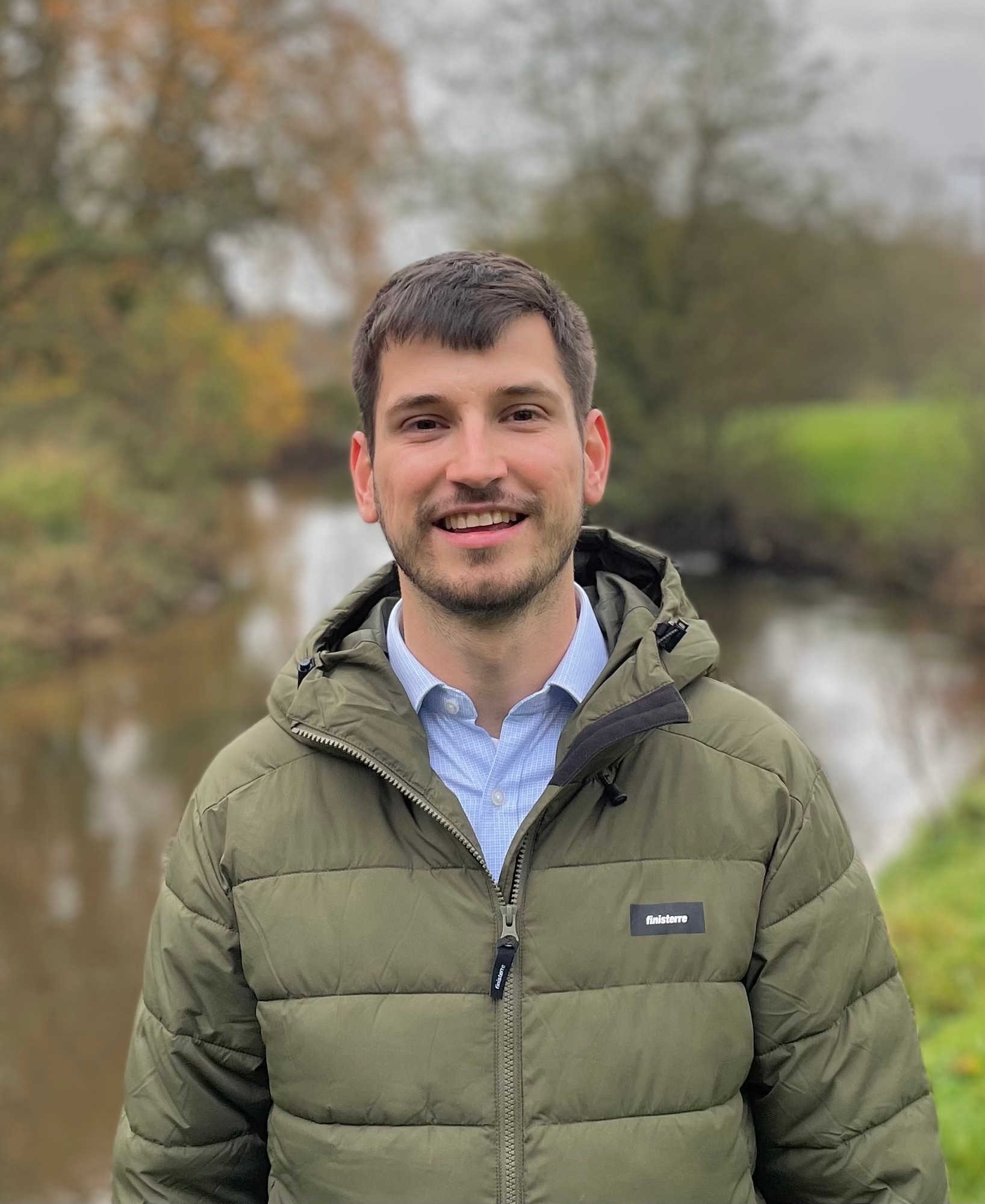February 2023
Time to act
We are at a critical moment when it comes to water. The 2022 drought highlighted the fragility of our current water system. Most of us experienced water use restrictions but the environment was on the front line again, bearing the brunt of both the weather and the abstractions made to meet our ever increasing demand. Once again we saw chalk streams drying up; fish and other aquatic wildlife being killed; algal blooms and desiccated wetlands.
Unfortunately, we also know things will get worse if we don't do something. In fact the latest estimates are that we face a shortfall of over 4,250 million litres of water a day in England if we want to have secure water supplies and a healthy environment.
We now have an opportunity, perhaps our last opportunity, to act. To make sure that we take the steps and make the urgent investments needed to ensure there is enough water for both people and for the environment. The water sector is currently seeking feedback on their draft regional and water company plans which set out what they plan to do over the next 25 years. We need people and organisations to respond to these draft plans; to share their concerns for our precious water environment and to demand that the water sector invests sooner rather than later to return our rivers and wetlands to health.
It's easy to respond - we have developed a short e-action which you can complete. If you have more time and want to submit a more detailed response, we also share below some of our thoughts which you can draw on. At the bottom of the blog there are also some tables that show comparative levels of ambition on some of the key metrics.
It's time to act - let your water company know that protecting our waters and wildlife should be a top priority.
Our take on the plans
Meeting the needs of the environment
For too long the environment has borne the brunt of over-abstraction beyond levels that it can sustain. This is evident from the fact that the biggest driver of the 4,250 million litres a day water supply deficit highlighted in the regional plans is to meet the needs of the current and future environment.
In the short term we expect all the regional and water company plans to meet the requirements of the Habitats Regulations and the Water Framework Directive with respect to existing abstractions. This legislation has been with us for several decades and there is no excuse for current abstractions failing to meet basic legal requirements.
In terms of meeting future environmental needs whilst we understand there may be a need for some further investigations we cannot allow these to drag on beyond the next investment period (2025-30) as proposed in the regional plans. We need to see action on the ground in the next five years and decisions on further licence reductions to meet the needs of the environment into the future need to be made by 2030. Where there is uncertainlty we should adopt the precautionary principle ensuring the needs of the environment are definitely being met until the evidence shows that any additional abstraction will not result in unacceptable impacts on it.
Ramping up efforts to help reduce personal water consumption
In the current five year investment period most water companies set out to reduce household consumption measured as per capita consumption (PCC) by between 3 and 6%. However, for nearly all of them PCC is actually 5-10% higher than their target level at this point in the investment period according to recently published data, largely due to the combined effects of more home-working during and since COVID plus hot summers in 2020 and 2022.
So, we urgently need to ramp up efforts to recover lost ground and get back on track. It is positive that the draft plans show most regions and water companies planning to get close to the 110 litres per person per day (lppd) by 2050 expectation that Defra set out in its Strategic Policy Statement. But we want companies to go further, aiming for a target of 100 lppd by 2050. We definitely need outliers such as Affinity, Wessex and Thames to show much more ambition given that they are in seriously water stressed areas and facing the biggest water supply deficits. Government also needs to step up as pretty much all of the regions and water companies are relying on supportive government policies on product water labelling and building standards coming through to get close to 110 lppd.
Mind the Non-Household Gap
Around 25-30% of public water supplies are used outside the home, for example in schools, shops, gyms and businesses. There is a huge opportunity to reduce this non-household (NHH) demand. Indeed the government has included a 9% reduction in NHH water use by 2038 in its Environment Act target. Ofwat, for the first time, has included a specific performance commitment to reduce NHH demand.
Despite this the draft regional and most company scale plans are hugely disappointing when it comes to reducing NHH demand. They show little appreciation of where and how this water is being used and most have very little activity or investment planned to specifically help NHH users save water. There is a big gap between what the government and regulators expect and what the most of the draft plans will deliver which needs to be bridged before the final plans are published.
Getting to grips with leakage
Current levels of network leakage are unacceptable. Not only is around 20% of supplied water (distribution input) being wasted, leakage is also wasting the energy and chemicals used for abstracting, treating and pumping the wasted water through the network. Ofwat and the government challenged the sector to reduce leakage by 15% by 2024/25 and to halve leakage by 2049/50 from a 2017/8 baseline. To date most are on track and the draft regional and company plans show almost all companies targeting further big reductions in leakage. By 2036/37 total leakage will have been reduce by over 30% from a 2020-21 baseline and will make up around 15% of distribution input and by 2050 it is around 13%. Smart meter data is highlighting that as much as 25-30% of leakage is from household and non-household customer supply pipes and within our homes and commercial buildings so the sector needs to up its game in terms of helping customers find and stop their leaks.
Reducing the water footprint of new development
A chunk of the potential supply demand deficits in the regional and company scale plans is driven by the need to provide water to support new development. We believe the plans should promote a position where any large scale water-hungry developments should be water neutral, particularly in areas with water deficits and where abstraction licences are being capped or reduced to protect the environment. We already do this for flooding where new developments in flood prone areas have to be flood neutral, so why not for water demand? Water companies should be statutory consultees when it comes to new development, proactively working with local authorities and developers to minimise the water demand footprint of new development focussing on those areas under greatest growth, abstraction and environmental pressure.
Addressing the energy, food and water nexus
The regional plans include huge potential increases in water demand to meet the needs of the agriculture and energy sectors and, in particular, for hydrogen production. As an example, the WRE draft plan includes a jump in energy sector water demand from 4 Mld to 142 Mld despite facing a huge water availability deficit. It is essential that wherever possible water-hungry energy supply options should be sited in places where there is water available and they should not add to existing water availability problems. If they are progressed and new water supply solutions are needed then financial contributions to shared solutions need to be provided by the private energy companies. More broadly, we need to see a shared commitment to both demand and supply side solutions from other sectors taking water from the environment.
Delivering more for nature...
Under the Environment Act (2021) any works requiring planning permission are required to leave nature in a better state than which it was found, through a mechanism termed Biodiversity Net Gain. The emerging plans consulted on in spring last year appeared to consider biodiversity as simply a factor to be weighed up against others, rather than a legal obligation. Updated plans make it clearer that the 10% net gain target will be achieved - but achieving the legal minimum is the least we’d expect. We’d like to see companies showing leadership, securing better outcomes by ensuring that their biodiversity delivery aligns with priorities being set out in Local Nature Recovery Strategies, and going beyond the 10% minimum requirement.
...and working with it
Most plans note that the solutions they are considering have the potential to provide multiple benefits – not just protecting or boosting water supplies, but reducing pollution, lessening flood risk or boosting biodiversity. Nature-based solutions are particularly good at doing this, but disappointingly the plans have struggled to prioritise these as the water resources benefits that they would deliver are more difficult to quantify than for other types of solutions such as building reservoirs, processing plants and pipelines. However, it’s welcome that the plans look at how to counter this, with some proposing to implement schemes, or to monitor projects that are already underway, to build the evidence base so that nature-based solutions can be more readily employed in future. We think the plans could do more to factor in that such schemes are important from a climate perspective too, being light on carbon and helping river systems (that we rely on for our water) to adapt to a changing climate.
Frustrations over the quality and staggered release of the plans
There continues to be stark variation, between plans, in terms of formatting, readability and overall quality as a publication. Water Resource Planning Guidance outlines that plans need to be transparent and understandable in order for customers and stakeholders to be able to comment. Accordingly, the best plans (such as WRSE and WRW) featured a main document that was easy to read, providing complex material in an engaging format, without concealing crucial information in the annexes. Plans that were not transparent either glossed over the detail or were overly technical and thus unreadable. Customers and stakeholders reading these types of plans will be unable to respond effectively, if at all.
As customer response rates are already worryingly low, greater emphasis should be placed on regional groups and individual companies to produce high-quality plans that allow customers to respond with confidence. As it stands, the formatting and style of several plans has meant that they are progressing relatively unchallenged. For example, WReN’s draft plan fails to present its content in an easily accessible format and will require substantial restructuring in order to achieve this.
Given the interconnectivity of water resources, plans should not be viewed in isolation. Thus, the staggered release of draft regional and company plans has made it difficult for consultees. The reason that some plans were delayed is because they fell short of the expectations of the regulators. Failing to meet the target release date is unacceptable. Penalties should be levied if this is repeated.
There are positive commitments included in some of the plans, but if we are to achieve sustainable water resources management we hope to see the plans’ shortcomings resolved before final adoption.
Further detail on how to respond to the plans can be found in our e-action here.
Supporting water company data tables
Data taken from dWRMP table 2e collation 5Dec2022, 16Dec2022 and 10Jan2023 provided by Environment Agency
Nathan Richardson is Head of Policy at Waterwise. James Overington is Water Policy Officer at WildFish. Stuart Singleton-White is Head of Campaigns at the Angling Trust. Ali Morse is Water Policy Manager at The Wildlife Trusts, and Chair of Blueprint for Water. Milly Strong is Senior Water Policy Officer at RSPB. Ellie Ward is Policy Officer at Wildlife and Countryside Link.
Follow: @Waterwise, @WildFishCons, @AnglingTrust, @WildlifeTrusts, @Natures_Voice, @WCL_News
The opinions expressed in this blog are the authors' and not necessarily those of the wider Link membership.





Latest Blog Posts